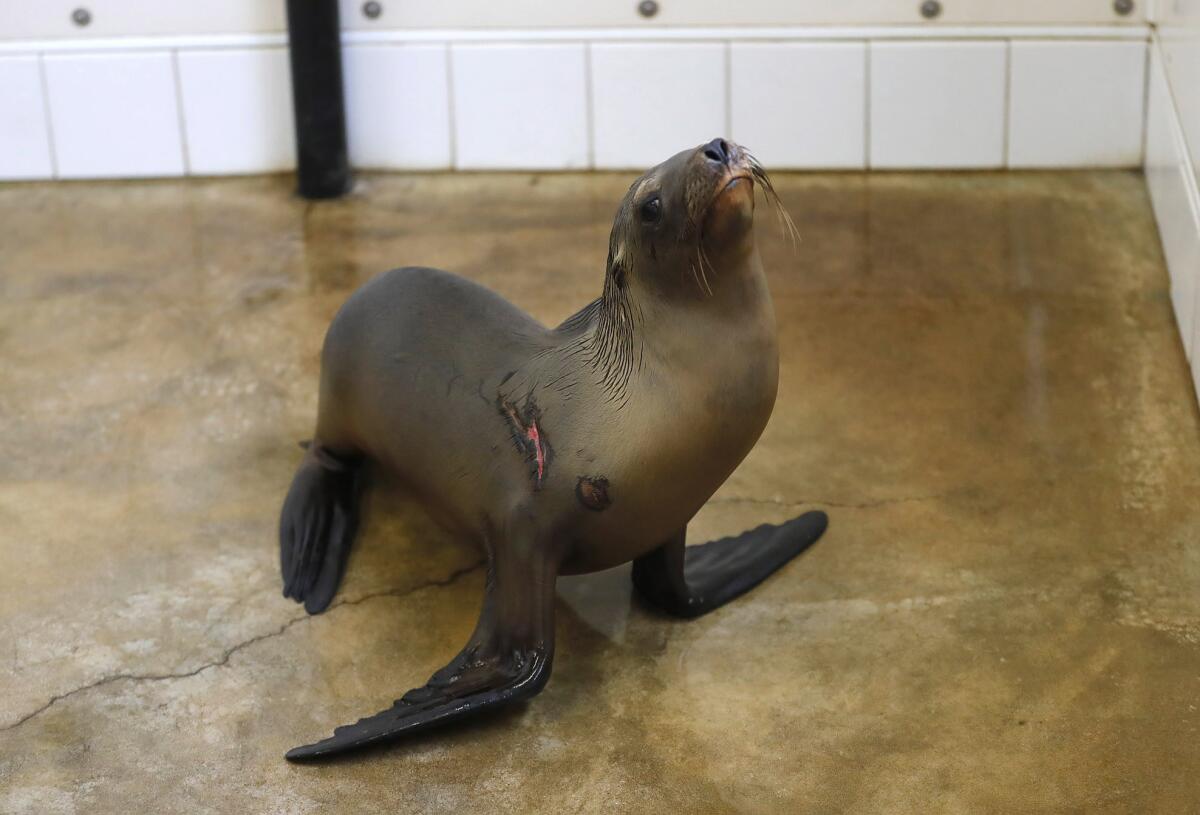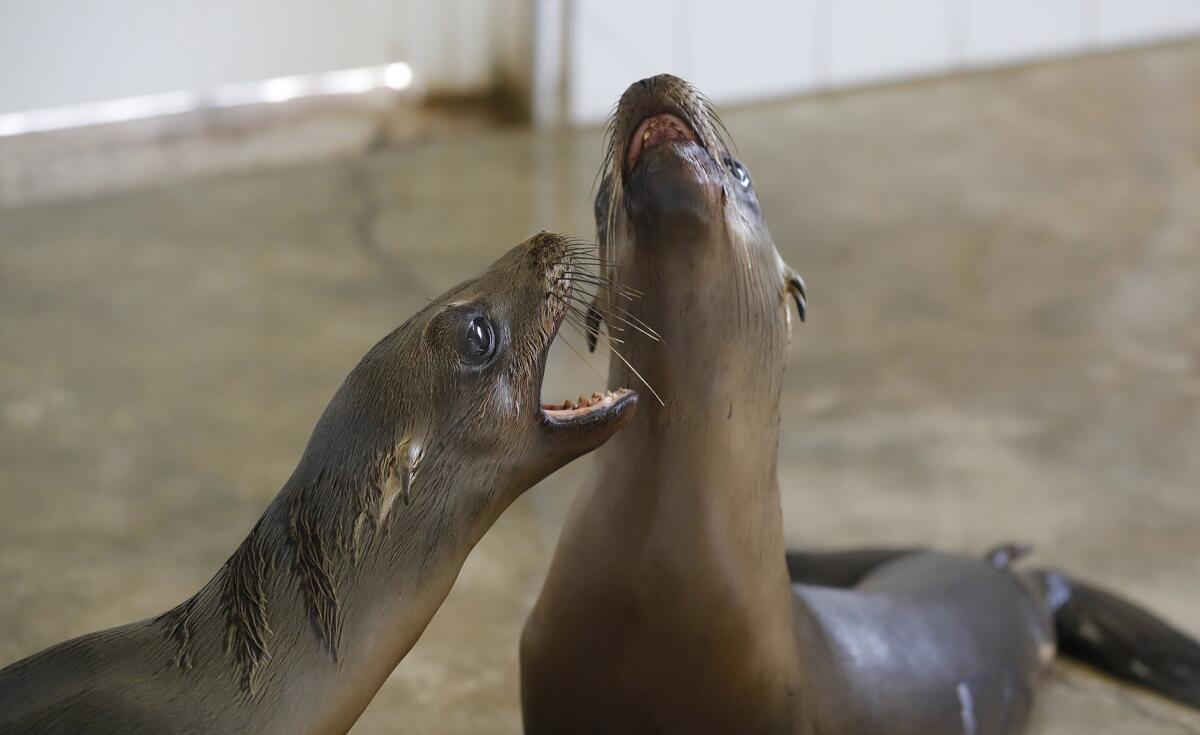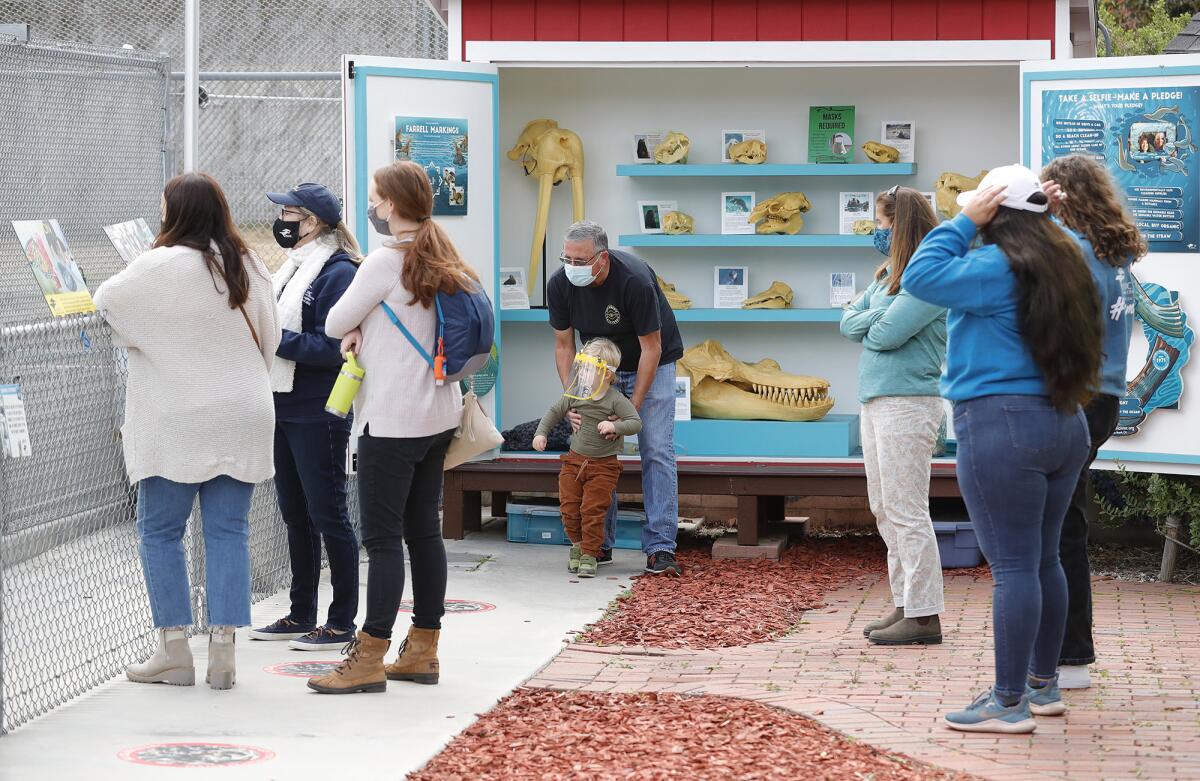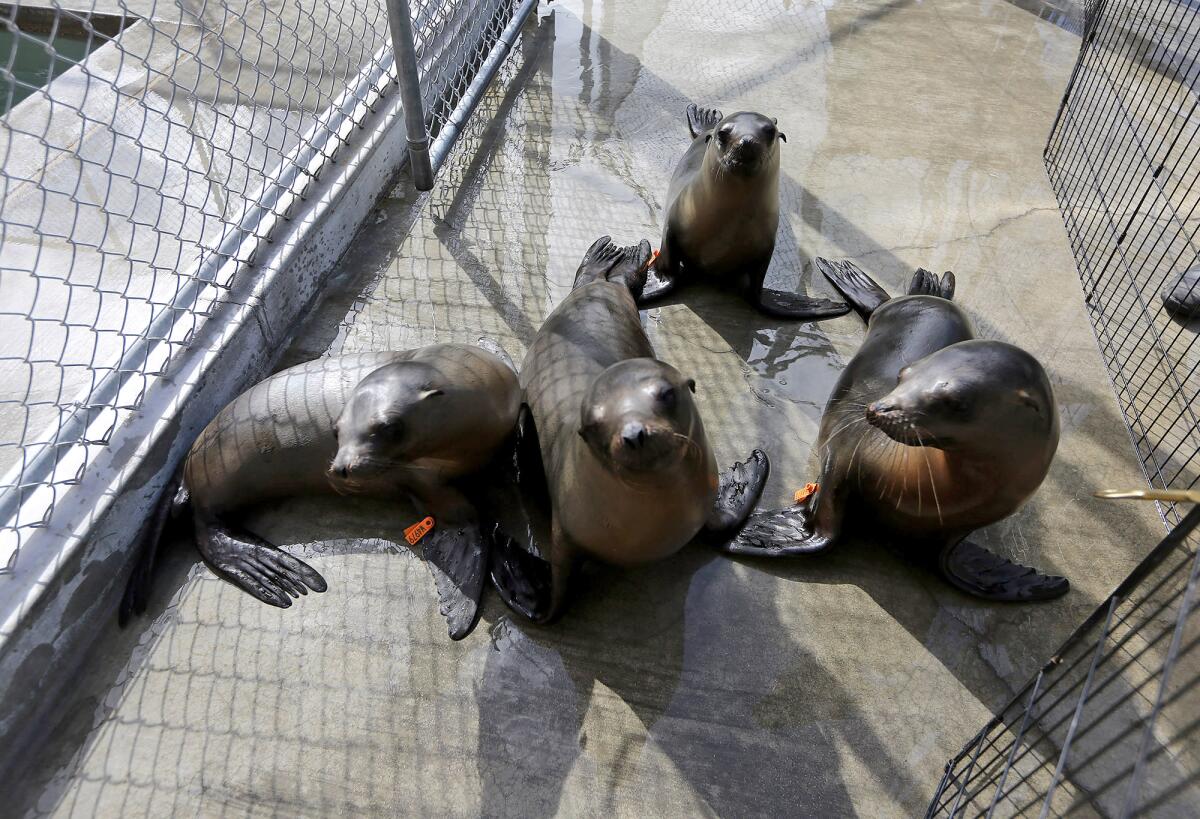Pacific Marine Mammal Center, a lifeline for injured sea lions, reopens to visitors

- Share via
Brock Wetzel was taking a walk with his grandfather, brother and sister around some rocky cliffs near San Onofre surf beach on Presidents Day when he noticed a small sea lion lying on a sandy berm.
“We thought it was just fine at first,” the 12-year-old San Clemente resident said. “Then it turned around, and we saw it had a cut on it.”
They reached out to Wetzel’s aunt, Candice Appleby, a professional paddleboarder whose affinity for pinnipeds is so well-known her friends jokingly refer to her as the fairy godmother of sea lions.
She knew just who to call.
For the past 50 years, the Pacific Marine Mammal Center in Laguna Beach has rescued and rehabilitated all manner of sea creatures, though its specialty is seals and sea lions. It also works with other nonprofits to coordinate care when animals are found sick, injured or impaired.
The organization has assisted more than 10,000 animals since it began in 1971 as Friends of the Sea Lion and is currently caring for 32 sea lions and one elephant seal, spokeswoman Krysta Higuchi said.
“We see a lot of malnutrition and dehydration, a lot of entanglements and boat wounds,” Higuchi said of the center’s clientele. “We sometimes see gunshot wounds or parasites and other illnesses. In adults, we might even see cancer.”
Scientists found that sea lions exposed to DDT and other chemicals in the ocean are more likely to die from a herpes-induced cancer.
When Appleby called the center about the injured sea lion at San Onofre, a team of rescuers responded and found Brock, with grandfather Bob Goossen and 10-year-old twin siblings Beau and Dolly, keeping vigil over the tiny creature until help arrived.
“They had this net thingy, where they scooped her up and flipped her over so she could sit on it,” Brock said of the rescue effort. “They carried her like that all the way back.”
The 8-month-old pup was lethargic and emaciated, weighing just 26 pounds instead of the 60- to 70-pound body weight typical for sea lions her age. She had lacerations to her shoulder and underbelly that may have come from a shark or an entanglement with a boat propeller.

“[The wounds] were so deep, you could see a lot of that deep tissue inside of her,” Higuchi said. “I was skeptical at first, but these animals have an incredible ability to heal.”
The tiny creature — whom Brock had the honor of naming Seaweed — underwent multiple surgeries after her arrival, graduating from an intensive-care cell with heated floor tiles and blankets to an indoor pen with other recovering sea lions.
Today, Seaweed is on the mend and beginning to take more of an interest in swimming, hunting and competing with penmates for fish. With all signs indicating her health is improving, she could be a few months away from being returned to her ocean home.
“She’s feisty,” Higuchi said of the young pup. “She’s a fighter for sure.”

Like many other Orange County institutions, the Pacific Marine Mammal Center closed to visitors last March amid the coronavirus pandemic. The closure was particularly hard on the nonprofit, which relies on volunteers, donations and visitors for its livelihood.
But on Monday, after weeks of a countywide decline in coronavirus cases, the center reopened, and by Tuesday, families had already booked tours.
Among the first round of visitors was Mission Viejo’s Robert McGlone, who was celebrating his 60th birthday with his two adult daughters, Ashly Oslovar and Amber McGlone, and 2-year-old grandson, Edison Oslovar.
Family trips to the center were common when the girls were young, McGlone said, and it seemed like a good idea to bring a new generation into the fold.
“This is [Edison’s] first time here, so we’re excited,” he said. “I just wanted to expose him to more things in the ocean. My daughters were around the same age when we first started coming here. It’s perfect timing.”

Higuchi said the center has been thrilled to reopen its doors to volunteers and members of the public, who are the eyes and ears of the group’s rescue efforts and the heart of its mission to inspire better stewardship of the ocean.
It’s a mission that Brock, who’s gotten an up-close and personal look at the kind of work the center does, won’t soon forget.
“I’m just happy that we could help [Seaweed] because she was probably going to die if we’d left her there,” he said. “It feels great, almost a relief that she’s OK.”
More to Read
Sign up for Essential California
The most important California stories and recommendations in your inbox every morning.
You may occasionally receive promotional content from the Los Angeles Times.














